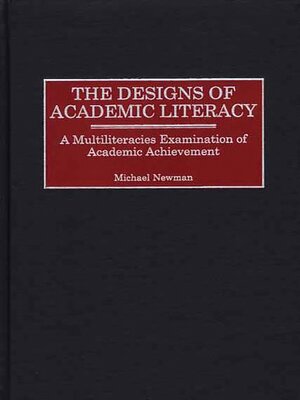The Designs of Academic Literacy
ebook ∣ A Multiliteracies Examination of Academic Achievement
By Michael Newman

Sign up to save your library
With an OverDrive account, you can save your favorite libraries for at-a-glance information about availability. Find out more about OverDrive accounts.
Find this title in Libby, the library reading app by OverDrive.



Search for a digital library with this title
Title found at these libraries:
| Loading... |
This qualitative multi-case study of academic literacy is the first research to assume the premises of the Multiliteracies Project of the New London Group of literacy researchers. It takes a multimodal view of literacy, not limited to reading and writing, and sets about to uncover the Design (the flexible structuring of rules and principles) that students and teachers both follow and create in college courses. This Design takes the form of a game in which students channel content from sources, such as texts and lectures, to assessments of various kinds. Students are then rewarded in the form of grades to the extent that the content they display matches the criteria the professor sets up.
The students in this study had to determine which content would or would not match these criteria, which of six types of information (facts, concepts, connections, processes, principles, or metainformation, e.g., rhetorical patterns) were desired and how best to supply them. To move content from source to target they used four operations. These include exposure (making themselves conscious of the information), extraction (a process of selecting information), manipulation (changing or synthesizing information), and display (showing the information). Greater awareness of this Design led to greater success. Pedagogical implications of this model include establishing a more realistic curricula for academic literacy programs and educating professors to better match grading criteria with learning goals.
The students in this study had to determine which content would or would not match these criteria, which of six types of information (facts, concepts, connections, processes, principles, or metainformation, e.g., rhetorical patterns) were desired and how best to supply them. To move content from source to target they used four operations. These include exposure (making themselves conscious of the information), extraction (a process of selecting information), manipulation (changing or synthesizing information), and display (showing the information). Greater awareness of this Design led to greater success. Pedagogical implications of this model include establishing a more realistic curricula for academic literacy programs and educating professors to better match grading criteria with learning goals.






